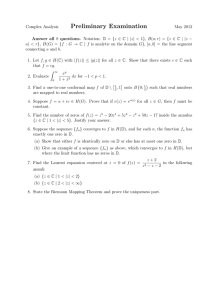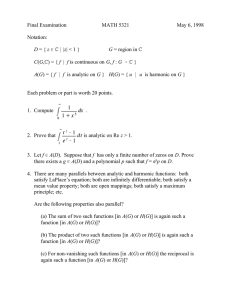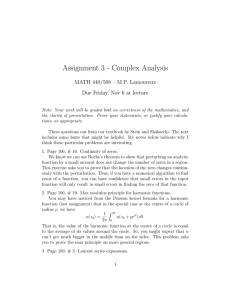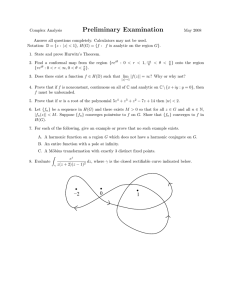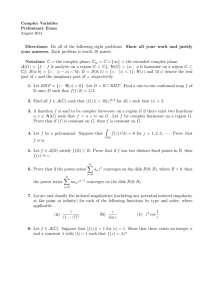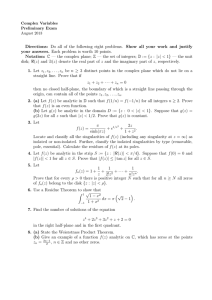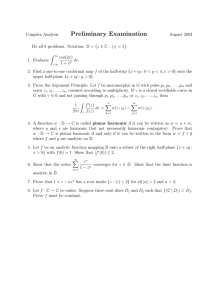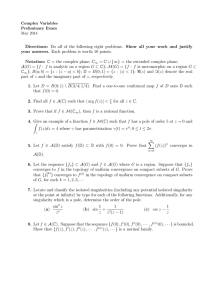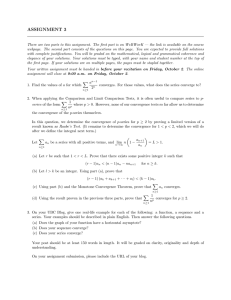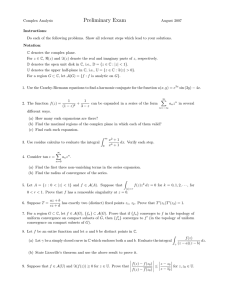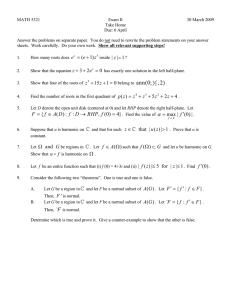Complex Variables Preliminary Exam August 2006
advertisement
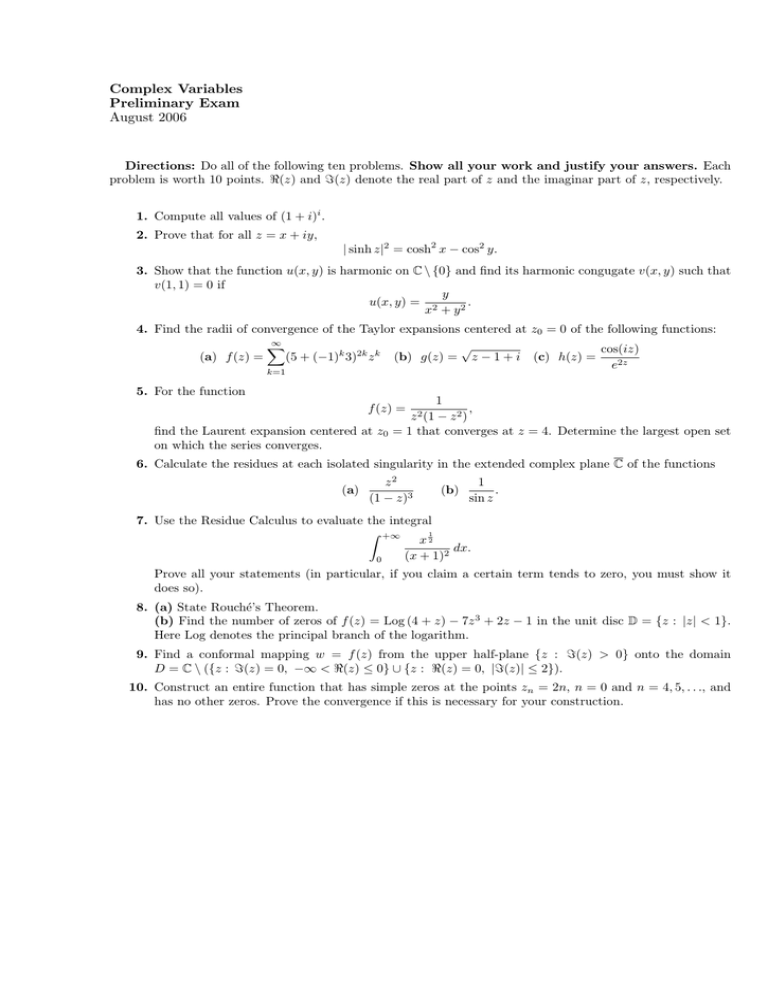
Complex Variables
Preliminary Exam
August 2006
Directions: Do all of the following ten problems. Show all your work and justify your answers. Each
problem is worth 10 points. <(z) and =(z) denote the real part of z and the imaginar part of z, respectively.
1. Compute all values of (1 + i)i .
2. Prove that for all z = x + iy,
| sinh z|2 = cosh2 x − cos2 y.
3. Show that the function u(x, y) is harmonic on C \ {0} and find its harmonic congugate v(x, y) such that
v(1, 1) = 0 if
y
.
u(x, y) = 2
x + y2
4. Find the radii of convergence of the Taylor expansions centered at z0 = 0 of the following functions:
∞
X
√
cos(iz)
(a) f (z) =
(5 + (−1)k 3)2k z k (b) g(z) = z − 1 + i (c) h(z) =
e2z
k=1
5. For the function
1
,
z 2 (1 − z 2 )
find the Laurent expansion centered at z0 = 1 that converges at z = 4. Determine the largest open set
on which the series converges.
f (z) =
6. Calculate the residues at each isolated singularity in the extended complex plane C of the functions
(a)
z2
(1 − z)3
(b)
1
.
sin z
7. Use the Residue Calculus to evaluate the integral
Z +∞
1
x2
dx.
(x + 1)2
0
Prove all your statements (in particular, if you claim a certain term tends to zero, you must show it
does so).
8. (a) State Rouché’s Theorem.
(b) Find the number of zeros of f (z) = Log (4 + z) − 7z 3 + 2z − 1 in the unit disc D = {z : |z| < 1}.
Here Log denotes the principal branch of the logarithm.
9. Find a conformal mapping w = f (z) from the upper half-plane {z : =(z) > 0} onto the domain
D = C \ ({z : =(z) = 0, −∞ < <(z) ≤ 0} ∪ {z : <(z) = 0, |=(z)| ≤ 2}).
10. Construct an entire function that has simple zeros at the points zn = 2n, n = 0 and n = 4, 5, . . ., and
has no other zeros. Prove the convergence if this is necessary for your construction.
